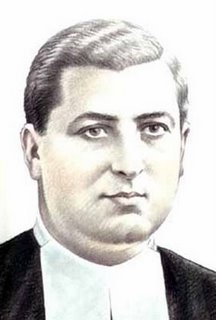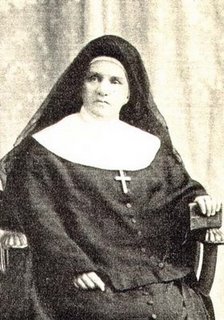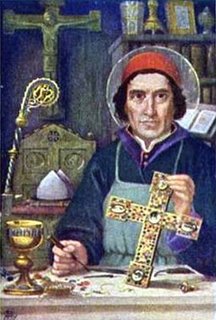
Q. I’d like to comment on your “anamnesis” article, if I may. The word may indeed always be used in a “sacrificial” context, but this in no way makes communion / the Lord’s Supper –a SACRIFICE. The reason for the “sacrificial” context is simply because Jesus wanted us to “remember” Him by looking BACK to His work /sacrifice on the cross. OF COURSE it has sacrificial overtones!But what do you do with verses like
Hebrews 10:18–“Now where remission of these is, there is no more offering for sin.”
The penalty for sin has already been paid in full. The sacrifices offered today are of our total selves, our obedience, our praise and thanksgiving. THAT type of “sacrifice” is acceptable. But there is no more sacrifice to offer for
SIN (as the RCC views the Eucharist).
A. You make a good point and if one is confined to scripture alone it cannot be proven one way or the other. However, historically the mass WAS referred to as a sacrifice in the very earliest writings before the Bible was even canonized. Therefore, the same Church that called the mass a sacrifice decided which books would be canonized and closed the canon of Scripture. If one accepts the canon of scripture how can one exclude the Faith as practiced by the very same Church that defined the canon?
But of course the sacrifice of the mass is not another sacrifice, as clearly stated by John Chrysostom in 403AD. Our masses are Re-Presentations of that ONE Sacrifice.That Once and for all sacrifice.
The Didache
“Assemble on the Lord’s day, and break bread and offer the Eucharist; but first make confession of your faults, so that your sacrifice may be a pure one. Anyone who has a difference with his fellow is not to take part with you until he has been reconciled, so as to avoid any profanation of your sacrifice [Matt. 5:23–24]. For this is the offering of which the Lord has said, ‘Everywhere and always bring me a sacrifice that is undefiled, for I am a great king, says the Lord, and my name is the wonder of nations’ [Mal. 1:11, 14]” (Didache 14 [A.D. 70]).
 Pope Clement I
Pope Clement I
“Our sin will not be small if we eject from the episcopate those who blamelessly and holily have offered its sacrifices. (Letter to the Corinthians 44:4–5 [A.D. 80]).
 Ignatius of Antioch
Ignatius of Antioch
“Make certain, therefore, that you all observe one common Eucharist; for there is but one Body of our Lord Jesus Christ, and but one cup of union with his Blood, and one single altar of sacrifice—even as there is also but one bishop, with his clergy and my own fellow servitors, the deacons. This will ensure that all your doings are in full accord with the will of God” (Letter to the Philadelphians 4 [A.D. 110]).
 Justin Martyr
Justin Martyr
“God speaks by the mouth of Malachi, one of the twelve [minor prophets], as I said before, about the sacrifices at that time presented by you: ‘I have no pleasure in you, says the Lord, and I will not accept your sacrifices at your hands; for from the rising of the sun to the going down of the same, my name has been glorified among the Gentiles, and in every place incense is offered to my name, and a pure offering, for my name is great among the Gentiles . . . [Mal. 1:10–11]. He then speaks of those Gentiles, namely us [Christians] who in every place offer sacrifices to him, that is, the bread of the Eucharist and also the cup of the Eucharist” (Dialogue with Trypho the Jew 41 [A.D. 155]).
Irenaeus
“He took from among creation that which is bread, and gave thanks, saying, ‘This is my body.’ The cup likewise, which is from among the creation to which we belong, he confessed to be his blood. He taught the new sacrifice of the new covenant, of which Malachi, one of the twelve [minor] prophets, had signified beforehand: ‘You do not do my will, says the Lord Almighty, and I will not accept a sacrifice at your hands. For from the rising of the sun to its setting my name is glorified among the Gentiles, and in every place incense is offered to my name, and a pure sacrifice; for great is my name among the Gentiles, says the Lord Almighty’ [Mal. 1:10–11]. By these words he makes it plain that the former people will cease to make offerings to God; but that in every place sacrifice will be offered to him, and indeed, a pure one, for his name is glorified among the Gentiles” (Against Heresies 4:17:5 [A.D. 189]).
Serapion
“Accept therewith our hallowing too, as we say, ‘Holy, holy, holy Lord Sabaoth, heaven and earth is full of your glory.’ Heaven is full, and full is the earth, with your magnificent glory, Lord of virtues. Full also is this sacrifice, with your strength and your communion; for to you we offer this living sacrifice, this unbloody oblation” (Prayer of the Eucharistic Sacrifice 13:12–16 [A.D. 350]).
 Cyril of Jerusalem
Cyril of Jerusalem
“Then, having sanctified ourselves by these spiritual hymns, we beseech the merciful God to send forth his Holy Spirit upon the gifts lying before him, that he may make the bread the Body of Christ and the wine the Blood of Christ, for whatsoever the Holy Spirit has touched is surely sanctified and changed. Then, upon the completion of the spiritual sacrifice, the bloodless worship, over that propitiatory victim we call upon God for the common peace of the churches, for the welfare of the world, for kings, for soldiers and allies, for the sick, for the afflicted; and in summary, we all pray and offer this sacrifice for all who are in need” (Catechetical Lectures 23:7–8 [A.D. 350]).
 Ambrose of Milan
Ambrose of Milan
“We saw the prince of priests coming to us, we saw and heard him offering his blood for us. We follow, inasmuch as we are able, being priests, and we offer the sacrifice on behalf of the people. Even if we are of but little merit, still, in the sacrifice, we are honorable. Even if Christ is not now seen as the one who offers the sacrifice, nevertheless it is he himself that is offered in sacrifice here on Earth when the body of Christ is offered. Indeed, to offer himself he is made visible in us, he whose word makes holy the sacrifice that is offered” (Commentaries on Twelve Psalms of David 38:25 [A.D. 389]).
 John Chrysostom
John Chrysostom
“When you see the Lord immolated and lying upon the altar, and the priest bent over that sacrifice praying, and all the people empurpled by that precious blood, can you think that you are still among men and on earth? Or are you not lifted up to heaven?” (The Priesthood 3:4:177 [A.D. 387]).
“Reverence, therefore, reverence this table, of which we are all communicants! Christ, slain for us, the sacrificial victim who is placed thereon!” (Homilies on Romans 8:8 [A.D. 391]).
“‘The cup of blessing which we bless, is it not communion of the blood of Christ?’ Very trustworthy and awesomely does he [Paul] say it. For what he is saying is this: What is in the cup is that which flowed from his side, and we partake of it. He called it a cup of blessing because when we hold it in our hands that is how we praise him in song, wondering and astonished at his indescribable gift, blessing him because of his having poured out this very gift so that we might not remain in error; and not only for his having poured it out, but also for his sharing it with all of us. ‘If therefore you desire blood,’ he [the Lord] says, ‘do not redden the platform of idols with the slaughter of dumb beasts, but my altar of sacrifice with my blood.’ What is more awesome than this? What, pray tell, more tenderly loving?” (Homilies on First Corinthians 24:1(3) [A.D. 392]).
“In ancient times, because men were very imperfect, God did not scorn to receive the blood which they were offering . . . to draw them away from those idols; and this very thing again was because of his indescribable, tender affection. But now he has transferred the priestly action to what is most awesome and magnificent. He has changed the sacrifice itself, and instead of the butchering of dumb beasts, he commands the offering up of himself” (ibid., 24:2).
“What then? Do we not offer daily? Yes, we offer, but making remembrance of his death; and this remembrance is one and not many. How is it one and not many? Because this sacrifice is offered once, like that in the Holy of Holies. This sacrifice is a type of that, and this remembrance a type of that. We offer always the same, not one sheep now and another tomorrow, but the same thing always. Thus there is one sacrifice. By this reasoning, since the sacrifice is offered everywhere, are there, then, a multiplicity of Christs? By no means! Christ is one everywhere. He is complete here, complete there, one body. And just as he is one body and not many though offered everywhere, so too is there one sacrifice” (Homilies on Hebrews 17:3(6) [A.D. 403]).
 Fulgentius of Ruspe
Fulgentius of Ruspe
“Hold most firmly and never doubt in the least that the only-begotten God the Word himself became flesh [and] offered himself in an odor of sweetness as a sacrifice and victim to God on our behalf; to whom . . . in the time of the Old Testament animals were sacrificed by the patriarchs and prophets and priests; and to whom now, I mean in the time of the New Testament . . . the holy Catholic Church does not cease in faith and love to offer throughout all the lands of the world a sacrifice of bread and wine. In those former sacrifices what would be given us in the future was signified figuratively, but in this sacrifice which has now been given us is shown plainly. In those former sacrifices it was fore-announced that the Son of God would be killed for the impious, but in the present sacrifice it is announced that he has been killed for the impious” (The Rule of Faith 62 [A.D. 524]).For more see Catholic Answers at catholic.com



 Posted by naniam
Posted by naniam 




































